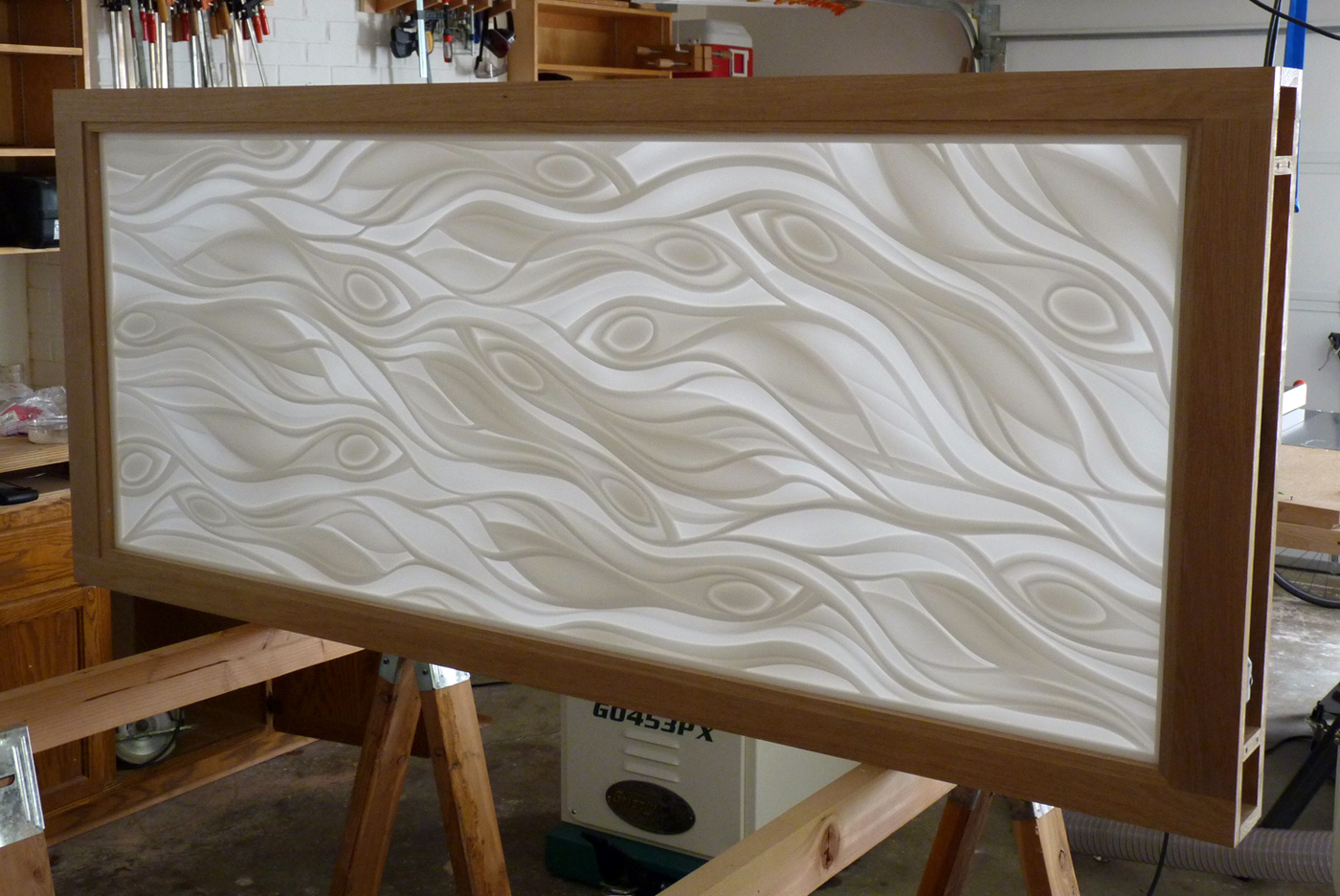Paul Harman at the Intersection of Hand and Digital
When not being an architect, Paul likes to make things, particularly furniture and architectural ornament. One of his pieces, the Owl Wall Sconce, was exhibited this summer at a juried show of local furniture makers at the Maude Kerns Art Center in Eugene. The following is from an interview with Paul on his development as an artisan/artist:
I first became interested in craft and making things in my early twenties. I had just graduated from college, and while I wasn’t sure what I wanted to do, I knew that I wanted to work with my hands. A former professor recommended I visit Arcosanti, a pedestrian-oriented community conceived by architect Paolo Soleri as an alternative to urban sprawl, which is under construction in the Arizona high desert north of Phoenix. After completing the introductory workshop, I went to work at the community foundry where I learned a traditional method of making sandcast bronze wind bells. I thought of Arcosanti as being like a self-guided trade school. I would work at the foundry from 6am to 2pm and then would be free the rest of the day to use the other facilities, which included a wood shop, metal shop, and ceramics studio. It’s here where I first began exploring sculpting in clay.
Where I grew up in eastern Pennsylvania there is a rich history of timber frame barns and covered bridges. I had always admired this way of building, and so after leaving Arcosanti I attended a summer-long apprenticeship at the Heartwood School in the Berkshires of Massachusetts. Heartwood specializes in teaching traditional timber frame carpentry using hand tools. Timber frame structures are in many ways like large pieces of furniture, and the joinery skills we were taught inspired my interest in furniture making.
My late twenties and early thirties were spent working for small architectural firms in Philadelphia, while I continued to explore my own creative work in my free time. Without a formal degree, my career prospects in architecture were limited, and so I decided to return to graduate school at the University of Oregon to pursue a Master’s degree. It was here that I was first exposed to the creative potential of digital fabrication through using the school’s CNC router. Learning to use this technology has completely transformed my approach to craft. Not only has it generally extended my capabilities by allowing me to do things that would be very difficult to execute using conventional techniques, but also it has allowed me to translate ideas I have been previously only able to explore in ceramics into a variety of other materials, such as wood, solid surface (for example, Corian), concrete, and glass.
I periodically encounter people who are “purists” in their thinking about craft. To them, utilizing digital tools is somehow “cheating.” One of my heroes is Wharton Esherick, an artist and craftsman, who famously declared, “I use any damn machinery I can get hold of…. Handcrafted has nothing to do with it. I’ll use my teeth if I have to.” Like Esherick, for me the design idea is most important, and I’ll use whatever tools are at my disposal to realize the idea in physical form.
On the opposite extreme, I have taught classes at the University of Oregon in digital modeling and fabrication where I have encountered students who insist that only work that is purely digitally derived from parametric processes devoid of the human hand are valid uses of digital fabrication technologies. This kind of absolutist thinking is equally puzzling to me. I believe there is an innate intelligence in the human hand when it comes to generating pleasing and meaningful forms. Why wouldn’t you want to marry the two capabilities? That is how I approach much of my work now. It is an intersection between the hand and the digital. While much of the work I do is executed digitally, I think and design tactilely. When I am working on an ornamental design, I often need to first model the design in clay by hand before I jump to the computer so that I can understand the form in a visceral way that I can only get through touch.
I know this is going to sound cliché, but what inspires me most, particularly my work in ornamental designs, is the patterns and forms I find in nature. The swirling grain of wood burls, the pattern on a spider’s thorax, ripples and undulations in water—that sort of thing. While there is a trend in contemporary ornament that seeks to replicate many patterns in nature using parametric techniques (think of Voronoi diagrams and soap bubbles), this really doesn’t interest me. I like to observe and internalize the things that inspire me. Then through a process of hand sketching and modeling, ideas begin to emerge; inevitably a certain degree of abstraction occurs. Sometimes the idea comes pretty quickly, but usually it’s a long, iterative process until I am satisfied that I have something worth the effort of actually making.
For more of Paul’s work, visit his website.








